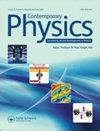星际对象
IF 3.3
4区 物理与天体物理
Q2 PHYSICS, MULTIDISCIPLINARY
引用次数: 2
摘要
自2017年以来,在太阳系内发现了两个宏观星际物体,它们在性质上都是不同的。第一个星际物体,奥陌陌1号,在距离地球月球距离的范围内经过,看起来是一颗没有可检测到的气体或尘埃损失的小行星,但却表现出非重力加速度。奥陌陌的短暂访问留下了关于它的来源的悬而未决的问题,这引发了许多理论假设,包括一颗没有尘埃彗发的冰彗星,一颗被潮汐破坏的行星或小行星的细长碎片,以及一个超多孔分形聚集体。第二个星际物体,2I/Borisov,与1I/ ' Oumuamua在体积物理特性上不同,并显示出明确的彗星尾巴。我们回顾了这些天体的发现,随后的观察和特征,以及关于它们起源的理论假设。我们在太阳系活跃的小行星和彗星的背景下描述了1I/ ' Oumuamua和2I/Borisov。这两个天体的发现意味着整个银河系都有类似的天体。即将到来的天文台应该探测到更多的星际星子,这可能会为了解整个银河系中行星形成过程的变化提供新的见解。本文章由计算机程序翻译,如有差异,请以英文原文为准。
Interstellar objects
ABSTRACT Since 2017, two macroscopic interstellar objects have been discovered in the inner Solar System, both of which are distinct in nature. The first interstellar object, 1I/‘Oumuamua, passed within lunar distances of the Earth, appeared asteroidal lacking detectable levels of gas or dust loss, yet exhibited a nongravitational acceleration. 1I/‘Oumuamua's brief visit left open questions regarding its provenance which has given rise to many theoretical hypotheses, including an icy comet lacking a dust coma, an elongated fragment of a planet or planetesimal that was tidally disrupted, and an ultra-porous fractal aggregate. The second interstellar object, 2I/Borisov, was distinct from 1I/‘Oumuamua in terms of its bulk physical properties and displayed a definitive cometary tail. We review the discoveries of these objects, the subsequent observations and characterisations, and the theoretical hypotheses regarding their origins. We describe 1I/‘Oumuamua and 2I/Borisov in the context of active asteroids and comets in the Solar System. The discovery of these two objects implies a galactic-wide population of similar bodies. Forthcoming observatories should detect many more interstellar planetesimals which may offer new insights into how planetary formation processes vary throughout the Galaxy.
求助全文
通过发布文献求助,成功后即可免费获取论文全文。
去求助
来源期刊

Contemporary Physics
物理-物理:综合
CiteScore
2.90
自引率
5.00%
发文量
18
审稿时长
>12 weeks
期刊介绍:
Contemporary Physics presents authoritative and lucid introductory review articles on important recent developments in physics. The articles are specially commissioned from experts in their field. The authors aim to review comprehensively the current state of their subject and place it within a broader context of contemporary research, industrial possibilities and applications in an accessible way.
The Journal is of particular use to undergraduates, teachers and lecturers and those starting postgraduate studies who wish to be introduced to a new area. Readers should be able to understand the review without reference to other material, although authors provide a full set of references so that those who wish to explore further can do so. The reviews can also be profitably read by all those who wish to keep abreast of the fields outside their own, or who need an accessible introduction to a new area.
Articles are written for a wide range of readers, whether they be physicists, physical scientists or engineers employed in higher education, teaching, industry or government.
Contemporary Physics also contains a major section devoted to standard book reviews and essay reviews which review books in the context of the general aspects of a field.
 求助内容:
求助内容: 应助结果提醒方式:
应助结果提醒方式:


